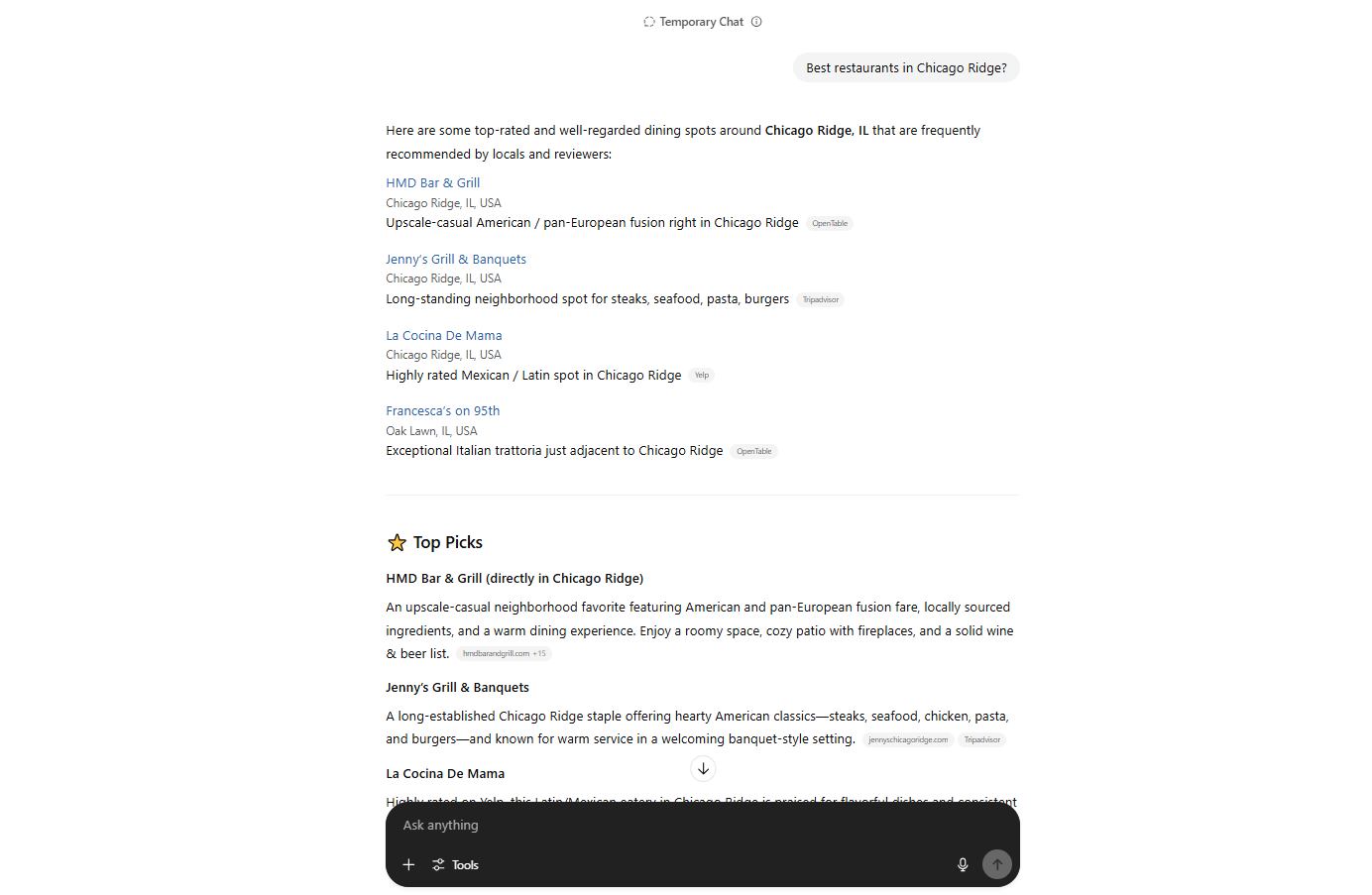Are you interested in search engine optimization? It is the best thing you can do to help your company move toward success. In this article, you will get information about what your website should be like and whether you should write a blog. We’ll talk about SEO for software development companies: text and technical optimization, how to present information on a website, and how to mine links.
- General Information about SEO
- SEO for a New Website and for a Software Company’s Current Website
- Website: What Should It Be?
- Blog: To Write or Not to Write?
- Text Optimization as Part of SEO for Software Development Companies
- Technical Optimization
- AIO and GEO — The “New SEO” for Neural Networks and AI Systems
- Usability and Behavioral Factors
- Link Building in SEO for Software Companies
- Conclusion
Do you want your competitors to wonder, “How do you grow so cleverly?” and clients to already be in love with your company when they contact you? Then you need a solid SEO strategy. It will help immerse your audience in the world of your company and expand the number of users interested in your services on a daily basis. Constant work on high-quality organic traffic is a guarantee of a constant flow of clients.
The main features of SEO are its long-term nature and variability. It is quite difficult to move in a process that requires long-term efforts, but at the same time, the rules of movement toward the result are changeable. Your SEO for software companies plan of action today may be different from your plan in two days. Algorithms change, people change, needs change, technologies change — you need to have time to readjust. In an environment of constant change, knowing how to get clients for software development companies will be your advantage. Comprehensive knowledge about yourself and your target audience helps you to be flexible, adapt, and find solutions quickly.
Changeability requires constant focus and keeping up with the changes. The result goes to those who know how to act and started doing it yesterday.
Nowadays, in order to just stay put, you have to run as fast as you can. And to get somewhere in time, you have to run twice as fast.
General Information about SEO
SEO stands for “search engine optimization”. It refers to actions that enhance your website’s page ranking in searches to attract more and superior traffic from search engines. SEO acts like a bridge, connecting your software to individuals who either need it or are unaware of their need, and your task is to identify touchpoints with them. Your SEO level influences your company’s visibility, your ability to surpass competitors, and the quantity of quality leads you obtain.
If you doubt the potential of SEO for your IT company, start with PPC (Pay-Per-Click). The PPC advertising model allows you to quickly attract customers and profit from marketing. You can then reinvest those funds and do SEO.
SEO and PPC are the main, but not the only effective marketing strategies for software companies. We highlight 18 best marketing strategies for software development companies. Choose the right ones for you and combine them for greater marketing impact.
The process of setting up SEO is often divided into On-Page SEO and Off-Page SEO.
On-Page SEO:
- Collecting key queries: Research what your audience is seeking and how they articulate their needs. The information gathered will assist in creating the site’s structure.
- Text optimization: Optimize content using the keywords previously collected to enhance your site’s search engine ranking.
- Technical optimization: Assist search engines in effectively crawling, indexing, and interpreting your website. A technically optimized website will bolster SEO and offer a user-friendly experience to visitors.
Off-Page SEO:
- Link building: Work with links to establish and reinforce search engines’ trust in your site.
- Presence in topical directories: Position information about your company in relevant and industry-specific directories. This strategy helps search engines associate your website with particular topics, increasing the likelihood of discovery by users seeking software solutions in your niche.
- Google Business: Publish precise and current data on your profile to boost your company’s visibility in local searches.
SEO for a New Website and for a Software Company’s Current Website
Your approach to SEO for IT depends on whether you’re creating a new website or optimizing an existing one.
SEO Tips for a New Website
The development of a website interested in SEO should begin with the work of a marketer and SEO specialist. These are specialists who should accompany the entire process of working on the site. Do not rush to design your site, think through the structure. Beautiful — this does not mean useful. If you do not have time to make the site properly now, when will you have time to make it again? The main stages when working on the creation of a new site thought out from the point of view of SEO can be distinguished:
- Compilation of a semantic core.
- Site structure design.
- Content specifications.
- Copywriting.
- Technical recommendations for designer and developer.
- Design.
- Website layout and development.
- Final audit.
- Release.
The bottom line is that SEO for software companies starts before you even have a website built.
SEO Tips for an Existing Website
For an existing website, SEO efforts should focus on improving and maintaining search engine visibility. If you already have a quality semantic core in place, then you can move on to a website audit. If a semantic core is not assembled, then start there. Your stages of work will consist of:
- Collection of semantic core.
- Audit (text, technical, link).
- Technical tasks for the text.
- Recommendations on technical points.
- Drawing up a link-building strategy.
Website: What Should It Be?
Structure, structure, and more structure. Without proper website structure, your SEO efforts will falter. Often, the barrier between you and prospective clients is your website’s condition. For a development company valuing SEO and ranking, a one-page site won’t suffice.
A well-structured, user-friendly website makes a robust impression on both users and search engines.
Ideal sections for a software company’s site include Services, Industries, Solutions, Technologies, Cases, and Blog. You can visualize this structure in the image below:

In building a website structure, understanding your strengths and weaknesses will help. Use a simple SWOT analysis method and get an understanding of what you need to pay attention to, what you need to strengthen.
Let’s say your:
- Services — Mobile and Web Development.
- Industry — Restaurants.
- lutions — Food Delivery App.
- Technologies — Kotlin, Swift, TypeScript, Node.js.
It’s crucial to interconnect each element in one section with elements in others. Potential clients might search for various terms:
- Food delivery app development.
- Kotlin app development.
- Development companies for the restaurant industry, etc.
Depending on the page and query a visitor lands on, they should find comprehensive answers, establishing your expertise in this niche.
Such strategic linking is not just about answering queries. She boosts page authority, enhances behavioral factors, usability, and expedites indexing.
Your website should be visually striking, not just informative. A “wow” effect helps highlight your skills as a developer. But remember, intricate designs shouldn’t slow down your site. If pages take too long to load, visitors won’t wait.
Strive for a balance between technical elegance, clarity, beauty, and utility.
Blog: To Write or Not to Write?
You are not faced with the choice of whether to write content or not. Content is a must-have tool. Content is the best friend of SEO in software engineering.
Too many software firms overlook blogging’s impact. A blog isn’t just helpful — it’s essential for driving traffic and generating leads. Search engines assess information using the E-E-A-T principle: Experience, Expertise, Authoritativeness, and Trustworthiness. Your content marketing strategy should reinforce these elements.
Your blog should prove the claims on your website. If you’re into developing food delivery apps, your blog should show it. Include posts like:
- How to Develop a Food Delivery App?
- What’s the Cost of Developing a Food Delivery App?
- Which Technologies Should Be Used for Creating a Food Delivery App?
- CRM for Food Delivery Companies.
Reflect in text and numbers your experience, knowledge, values. The more you share, the more potential clients will feel like they know you. That’s how you connect.
Building a business is all about nurturing relationships.
Text Optimization as Part of SEO for Software Development Companies
Gathering Search Queries
Start your text optimization by identifying search queries. Use tools like Google Keyword Planner, Ahrefs, or Semrush. Compile a table of queries, including their frequency and competition in your target area.
Focus on local keywords if you’re targeting local SEO for software development companies.
Steer clear of “developer(s)” queries, as they’re often related to freelancers or job openings, not your software development company. Instead, look for terms like “development services”, “development company” or “consulting”. For instance, “ruby on rails development services”, “mobile app development company” or “blockchain consulting”.
Before choosing a query, type it into a search engine. If most results are informational, that query is best suited for blog content.
Don’t forget to check the top three competitors’ pages when selecting your keywords. They’re ranking high for a reason.
Clustering Search Queries for SEO in Software Engineering
Group your queries into clusters based on their meaning. Use these clusters to guide your site’s content, rather than individual terms. Clustering tools like Ahrefs and Semrush can be invaluable here.
Opt for high-frequency clusters. A handy tip: consider 30% of a cluster’s total frequency as a potential traffic estimator.
Keep an eye on the competition for your queries. Higher competition means you’ll need more backlinks, so plan your resources and budget accordingly.
Typically, dedicate one cluster per page since promoting multiple clusters on one page complicates things. If two clusters interest you (e.g., “Ruby on Rails development company” and “Ruby on Rails Consulting”), create separate pages.
Your final clusters will each represent a unique page on your website. Create a hierarchical site structure based on them.
Terms of Reference for Page Optimization
Create a technical specification for optimizing each page of the website.
Employ the most frequent and pivotal query in the Title, Description, H1, and Clean URL.
Examine the top 3 – 5 competitor sites for your chosen query. Compute the average frequency of the query in their content. Apply this for each cluster query. This way, you’ll obtain data for the technical assignment: how many times you need to use a specific query on the page. Perform similar actions for headings H2 through H6.
Also, use these competitors to gauge the minimum text length for your pages.
Use a key phrase no more than once every 100 words of text.
When planning your page structure, you can take cues from key competitors in your niche.
Your text must be original, not produced by AI. An example of a text-checking service is Copyleaks.
Prioritize text readability over keyword density. Focus on value. Infuse your texts not just with keywords, but with meaningful content.
Include LSI words, which are related to your primary queries, to enhance page relevance.
Don’t forget to put keywords in your image ALT tags. They help search engines understand and rank your images.
Finally, provide your technical tasks to your copywriter and monitor their progress.
Technical Optimization
We haven’t delved into all the nuances of technical optimization, as various authors have covered them extensively. Instead, we chose to emphasize the essential aspects crucial for the SEO of an outsourced development company’s website. If you lack fundamental SEO for software development companies skills, some points might be unclear. If so, treat this list as a checklist for your SEO specialist.
Site domain — use regional domains for local sites and domains like .com, .net, .io, or .co for international ones. If you have domain mirrors or a technical staging address, ensure they’re closed off from search engines to avoid site duplication.
Hosting — opt for fast, reliable hosting with good uptime. For regional promotion, use hosting in the target region. For international sites, employ a CDN (Content Delivery Network).
CMS — avoid website builders like Wix or Tilda. WordPress or Drupal are ideal for website development. However, developing a custom site can be significantly more costly. If using JS sites on frameworks like Gatsby, employ SSR (Server-Side Rendering) to ensure site indexing.
Security — your site must be virus-free.
SSL certificate — remember to renew and update your security certificate.
Loading speed and performance — adhere to PageSpeed Insights and Core Web Vitals recommendations. Optimize pages, compress images, and JS and CSS files.
Mobile device optimization — prefer adaptive design. All blocks should be present in both desktop and mobile versions. Your site should comply with Google’s standards, verifiable with this tool.
Code cleanliness — your site’s code should be error-free.
Redirecting www and http — your site should be accessible at one address only. Implement 301 or 308 redirects to the site’s primary version.
Clean URLs — use human-readable addresses that reflect the site’s structure.
Duplicate pages — each site page should be accessible at one address. For pages with identical text but different addresses, use canonical addresses. If your site has a search function, ensure search results pages are closed from indexing in Robots.txt or Meta Robots.
Duplicate titles, descriptions, h1 — each page should have a unique title and description. Avoid duplicating text across different pages.
Broken links — eliminate any links leading to non-functional pages.
Linking (internal links) — Wikipedia exemplifies effective linking.
Favicon — include icon versions for all devices.
Robots.txt restricts search engine access to folders, pages, or groups of files. But remember, Google only sees this as a recommendation.
Meta Robots — use this tag to hide pages from search robots more effectively. You can also control robots’ link-clicking abilities on the page.
Sitemap.xml — a sitemap helps expedite indexing. Don’t include pages blocked from indexing.
Hreflang — for multilingual sites, use specific parameters guiding robots to appropriate page localizations.
Breadcrumbs — they aid not just user navigation, but search engines’ as well.
Structured data — mark up as much data as possible. Be sure to use WebSite, Organization, Local Business, BreadcrumbList, and Article. You can validate microdata with this service.
The Open Graph protocol — include OG parameters for enhanced social media or messenger displays.
Nofollow, UGC, sponsored — employ these specific parameters for the site’s external links.
404 page —ensure to add navigation and design an error page.
Google Search Console and Bing Webmaster Tools — utilize these tools to monitor site status. By receiving timely reports to your email you can react quickly to changes on your site.
NAP — Name, Address, and Phone Number should be consistently and correctly listed everywhere. This includes website contacts, Clutch, GoodFirms, and other directories.
Google Business — set up and complete a business profile in the Google business directory. Your profile will show up in the Local Pack after garnering five reviews.
Pagination — properly design your blog page breakdown.
AMP — use cautiously, as these pages can sometimes harm conversions.
The Screaming Frog SEO Spider tool can assist with technical optimization.
AIO and GEO — The “New SEO” for Neural Networks and AI Systems
The rise of AI is one of the main reasons organic traffic drops, even when your search rankings stay the same. Search has changed. Users now get answers directly in Google AI Overviews or Bing AI summaries — without scrolling down to traditional results. Or they receive answers from ChatGPT, Perplexity, Gemini, and other AI tools, without ever visiting a website.
To appear in these AI-generated answers and assistants, you need AI Optimization (AIO) and Generative Engine Optimization (GEO).
Below is an example of how our AIO and GEO work helped position our client — HMD Bar & Grill — as the top restaurant recommendation in ChatGPT for the query “Best restaurants in Chicago Ridge.”

Usability and Behavioral Factors
Usability determines how user-friendly and intuitive a website is for visitors. Clear navigation menus, logical content hierarchy, and intuitive features make your website easy to use.
Statistics indicate that most software company website users prefer the web version, with a significant percentage of conversions coming from it, underscoring the importance of a robust online presence, especially in the B2B marketplace.
While website design trends evolve and designers propose new solutions, these aren’t always user-friendly.
The trend of hiding navigation in a burger menu on website web versions complicates navigation for users.
Don’t overlook Mobile-Friendly metrics. Ensure users have a seamless experience accessing information on both your site and its mobile version.
Strategically organize the information on your site. Anticipate your audience’s questions and provide clear, consistent answers.
Here’s a user who has landed on your food delivery app development page and reviewed the information. They have a question: are there any testimonials? Provide them. Suggest they explore case studies in their area of interest. At a certain point, the user wonders: what does development cost? Offer them a conveniently placed link to an article explaining the factors affecting app development costs. From the article, they understand that costs largely depend on the development technology. Provide more information to your reader about these technologies. Propose an article on using Kotlin and Swift technologies versus React Native. The logical conclusion of an article about cost or selecting a development language would be a form to request a project cost estimate for that user.
This strategy enhances page views per user, extends visit duration, and improves behavioral factors. A visitor shouldn’t wonder where to find answers. They should be readily available, dispelling doubts and facilitating the transition from reader to client.
Ensure users don’t exit your site without converting.
Add search to the site for visitor convenience. Track in analytics the queries entered in the search bar to identify user needs. Don’t leave the user alone on the site, connect an online consultant for prompt communication and increase the likelihood of sales.
Link Building in SEO for Software Companies
The goal of link building is to build a quality link profile. Let’s imagine that your On-Page is done flawlessly, but your competitors may have perfectly optimized sites as well. If there are 100 such sites, how does Google determine which ones to display on the first page and which ones on the following pages?
Google values authority and citations. Just like in life, the one who is talked about more often is popular.
On the internet, citations are links. The more sites link to yours, the more authoritative it is in the eyes of search engines. Your task is to get links from authoritative resources to your site.
Methods of Backlink Mining
Depending on the competition, promoting certain queries may require a different number of links. Let’s consider the main ways to get backlinks for software development companies.
Natural Links
These occur when your content is so valuable that others voluntarily share it. Quality articles or useful tools invite such organic links.
Backlink Marketplaces
Exchanges are marketplaces where webmasters offer their sites for link placement. Such exchanges include Collaborator, PRnews. On these exchanges you can buy links to the sites of authoritative publications such as Bloomberg, Forbes, etc.
Outreach
This strategy involves forging relationships with potential partners, bloggers, and influencers for cooperative marketing and link sharing. It’s about convincing related sites to feature your company. The challenge? Finding agreeable sites that also appeal to your audience. These links demand effort but are SEO gold.
Crowd Marketing
The idea of crowd marketing is unobtrusive recommendations, reviews and comments on behalf of your company on websites visited by your target audience. Answer questions that relate to your expertise, draw the audience’s attention to your knowledge. Use mentions of your company with or without active links. Popular sites for this method include Quora, Reddit, and others.
Guest Content
You create a quality article and instead of publishing it on your blog, you give it to another website for publication. By creating high-quality guest posts on top resources in your industry, you can achieve brand mentions, traffic, and backlinks all at once. The audience for whom you publish a guest post plays a key role. If your blog readers are interested in topics related to your niche, they will appreciate your company as well.
Affiliate
Utilize the help of affiliates. Your clients’ websites can help you, where you can list yourself as a developer. Or, for example, you partner with a marketing agency that has clients who need website development, and you have clients who need marketing to promote their website. You can collaborate and exchange audiences by linking to each other.
PBN
A private blog network (PBN) is a group of websites created to provide backlinks and improve the SEO of your target website. You create a network of websites that look independent but are actually under your control. These websites then link back to your main software company’s website, improving your SEO ranking. You can find a few non-performing websites on your topic, buy them, relink them, and increase the link weight of your website. Be careful with this method, as search engines are against manipulative link building practices.
Drop Domains
At domain auctions, such as GoDaddy, you can find domains that have hosted sites similar to your topic. If you find such domains with a good rating, which were referenced by other sites, you can buy such a domain and attach it to your site, transferring all the link mass to your site.
Link Exchange
A link exchange, also known as reciprocal linking, is a mutual agreement between two websites to exchange backlinks. Approach link exchanges with caution, considering the relevance and quality of the websites you are exchanging links with. It’s safer to exchange links with your partners and customers.
Directories
Use online platforms such as Clutch, GoodFirms, and others. They categorize and list company websites based on specific industries or topics and have good rankings. Often, company listings from such directories rank well in search results. For example, for the query “custom software development company,” you are sure to find listings from Clutch at the top of the results.
Tier2
To strengthen the pages from which you’ve gotten links and transfer even more weight to your site, enhance your donor pages. Tier2 backlinks are reinforcements for the pages from which you’ve already gotten links. The concept involves increasing the authority and relevance of these intermediary websites, which in turn boosts the power they pass on to your main website.
Links from Social Media
Links from social networks have minimal weight for increasing a site’s ranking in search results, but they are great for diluting link mass and speeding up content indexing. If you want to quickly index an article posted on your blog, share links to it on social networks.
Conclusion
We’ve covered numerous components that affect SEO in an IT company. It might have intimidated you. As a reminder, everything discussed in this article about SEO in software engineering can be summarized by a few SEO talking points: content, indexing, performance, usability, link building.
There are tasks you don’t have the luxury to opt out of; they’re essential for SEO success: creating content and building links.
You might believe that initiating SEO from scratch and achieving effective results is an unattainable goal. However, it’s entirely possible. Indeed, successful companies’ outcomes aren’t a result of magic. It is the result of clearly defined goals, diligent implementation of recommendations and adherence to the sequence of actions.
Secure a reliable, experienced team to craft your SEO journey. Everyone has access to the same tools, but the results vary. Some work to enhance their image in your eyes. We focus on elevating your brand in your clients’ perception.
In a year, you’ll be glad you started doing SEO today.



